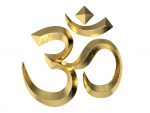What’s Tina Got to Do with It?

The famous singer, Tina Turner, is one of the people who has helped bring chants and chanting into the mainstream. Reportedly, when she turned to Buddhism, she began, in part, by using the Nam Myoho Renge Kyo mantra. There are many fast-paced versions on YouTube, but here she is, showing us how she does it. Tina Turner – Nam Myoho Renge Kyo (2H Buddhist Mantra). It made me curious! How ’bout you? Are you curious?
 I cannot tell a lie. I’ve felt inquisitive about chanting – off and on – over a period of years. Having been unsuccessful – despite many hours of effort – in changing some basics in my life, and knowing how well Miz Tina used what she learned to revolutionize her existence, I thought chanting might be beneficial. However, I’ve never had the discipline to study it, much less to do it for more than a hot minute. Today, I’m going to begin that journey and share it with those of you who would like to come along for the ride. Before we give more examples, let’s define our terms.
I cannot tell a lie. I’ve felt inquisitive about chanting – off and on – over a period of years. Having been unsuccessful – despite many hours of effort – in changing some basics in my life, and knowing how well Miz Tina used what she learned to revolutionize her existence, I thought chanting might be beneficial. However, I’ve never had the discipline to study it, much less to do it for more than a hot minute. Today, I’m going to begin that journey and share it with those of you who would like to come along for the ride. Before we give more examples, let’s define our terms.
What IS a Chant? Is It a Mantra?
“1) to make melodic sounds with the voice especially: to sing a chant
2) to recite something in a monotonous repetitive tone protesters were chanting outside,”
“A chant …. from Latin cantare, “to sing”)[2] is the iterative speaking or singing of words or sounds, often primarily on one or two main pitches called reciting tones. Chants may range from a simple melody involving a limited set of notes to highly complex musical structures, often including a great deal of repetition of musical subphrases, such as Great Responsories and Offertories of Gregorian chant. Chant may be considered speech, music, or a heightened or stylized form of speech….
Mantra – Not to be Confused with Mandala!

A mantra is a sacred utterance, a numinous sound, a syllable, word or phonemes, or group of words in Sanskrit believed by practitioners to have psychological and/or spiritual powers. Some mantras have a syntactic structure and literal meaning, while others do not.
The earliest mantras were composed in Vedic Sanskrit in India, and are at least 3000 years old. Mantras are part of many religions and cultures.
Mantras are typically melodic, mathematically structured meters, believed to be resonant with numinous qualities. At its simplest, the word ॐ (Aum, Om) serves as a mantra. In more sophisticated forms, mantras are melodic phrases with spiritual interpretations such as a human longing for truth, reality, light, immortality, peace, love, knowledge, and action.[3][11] Some mantras without literal meaning are musically uplifting and spiritually meaningful.[6]
According to IndiaNetZone, There are two types of mantras depending upon their pronunciation. They are monosyllabic and verse. The mantra in which one syllable is used is called Monosyllabic Mantra like Bija Mantras. When more than 60 syllables are used in a mantra it is called Verse Mantra like Gayatri Mantra .
Benefits of Chanting the Nam Myoho Renge Kyo Mantra
Let’s go back to the mantra that Tina brought to our attention. Why might it have worked so well for her (aside from her tremendous ability to commit to and focus on a goal)?
According to MeditativeMind.org, chanting this specific mantra has the following benefits.
-
It gives strength and ability to face any problem and difficulties.
-
Transform suffering of sickness, old age, death and re-birth.
-
The mantra helps to overcome Fear and Phobia.
-
Through this mantra we dedicate and surrender to the Almighty- the Supreme Power which relaxes the mind and body.
-
It enlightened the Mind.
-
Helps to control anger and submissive attitude.
-
Its chanting gives Love, Happiness, Joyness and Wealth.
-
Change Defeat into Victory, Loss into Gain and Bad Luck to Good LuckMeditativeMind.org also offers a beautiful version of the mantra that you can use to learn and practice. Click Here.
Does Chanting or Repeating Mantras Mean You Have Weird Beliefs?

Let’s face it. Some people think so. On the other hand, people have been chanting, alone or in groups, for centuries – as part of their religious practice – in order to manifest things they want in their lives – as part of a meditation process – or simply to make a point, as during social protest movements. So, if you do it, you’re in the good company of millions. Perhaps, it’s worth a try? Why not?
Why Chant?
- It helps focus the mind.
- Chanting certain words and intonations creates a specific energetic vibration which can be used for healing, manifesting, and/or creating inner peace.
- Click Here for an explanation of what it is – and is not!
Om Shreem Mahalakshmiyei Namaha (Abundance)
This is a favorite from India. It is repeated 108 times, usually with the help of beads, which enable one to better keep count while still concentrating on the words and meaning. Click Here to learn more about the beads and how to use them. Click Here for a different explanation.
Again, there are many versions of this mantra on YouTube. I usually employ those made by people from India. Most of you will be more familiar with the voice and work of Deva Premal. Here is the link to her rendition.
Chants Can Soothe
Even When Created
In an Unfamiliar Language
This is one of my all-time favorites. I hope you love it as much as I do! You can use it to quiet and center yourself in just a few minutes any time of day or night.
The Great Bell Chant (The End of Suffering) from R Smittenaar on Vimeo.
#chanting #mantras #focusing #mindfulness #Buddhism #Hinduism #NewAge #SpiritualPursuits
Let’s Get Well, Stay Well, and Live Well – Together! – Now!
